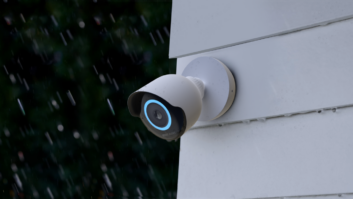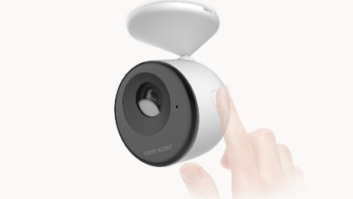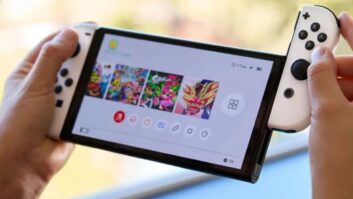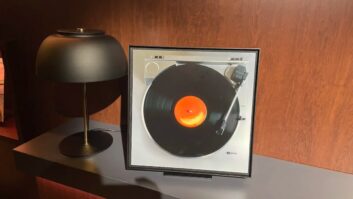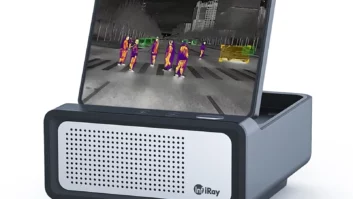PDA phones and combination cellphones/PNDs (personal navigation devices) took the spotlight in February, with AT&T launching a dual-slider Windows Mobile smartphone, T-Mobile launching the BlackBerry Curve 8900 and the Garmin-AsusTek alliance launching its first PND phones.
The AT&T device is Pantech’s dual-slider Matrix Pro, an updated version of the Matrix. It became available through all AT&T Mobility distribution channels on Feb. 18 at $179. For its part, T-Mobile launched the $199 BlackBerry Curve 8900, the thinnest and lightest BlackBerry with a full QWERTY keyboard. The Curve 8900 is the 11th phone that works with T-Mobile’s Unlimited Hotspot Calling service, which lets subscribers place unlimited Wi-Fi calls through T-Mobile’s public Wi-Fi hot spots and through home Wi-Fi routers optimized for the service.
The two PND phones, co-branded as Garmin-Asus, were unveiled at the Mobile World Congress in Barcelona. They feature built-in maps of North America or Europe and turn-by-turn directions. Sometime in the first half, the joint venture will announce pricing, availability and whether the products will come to the U.S.
Here’s what the products offer:
AT&T: Pantech’s dual-slider Matrix Pro is a Windows Mobile 6.1 Standard version of the Matrix, which lacked Windows Mobile OS, but the new model retains the Matrix’s slide-down dialing keyboard and slide-from-the-side QWERTY keyboard.
Compared to its predecessor, the Pro also adds a larger display, more multimedia codecs, longer talk and standby time, and triband W-CDMA HSDPA, which operates in AT&T’s 850/1,900MHz bands in the U.S. and the 2,100MHz band overseas. The previous Matrix was a dual-band 850/1,900MHz HSDPA model. Both feature quadband GSM/EDGE.
In other changes, the new model adds MySpace access, threaded SMS messages, ARM 11 528MHz processor and Windows Media Player 10 Mobile.
The display goes to 2.4 inches from 2.2, resolution, and goes to 240 by 320 pixels from 176 by 220; talktime goes to six hours from three, standby goes to 12 days from 10, and the battery goes to 1320mAh from 950mAh.
Additional audio codecs include WMA and RealAudio, and new video codecs include MPEG-4, H.263, H.264, RealMedia, Windows Media and 15 fps QCIF.
T-Mobile: The carrier is the first to offer the Curve 8900, a quadband EGDE model available through carrier stores and select third-party retailers.
The 4.29-inch 2.36-inch 0.53-inch phone, which curves gently backward, weighs 3.85 ounces. Its $199 price is with two-year contract and data plan after a mail-in rebate.
Features include built-in GPS and location-based services, including BlackBerry Maps; 3.2-megapixel camera/camcorder; and Wi-Fi for data and voice, including access to T-Mobile’s Unlimited HotSpot Calling service, which for $10/month lets subscribers place unlimited Wi-Fi calls through T-Mobile’s public Wi-Fi hot spots and through home Wi-Fi routers optimized for the service.
Garmin-Asus: PND maker Garmin teamed with PC maker AsusTek to launch the co-branded Garmin-Asus G60 and M20.
The consumer-aimed Nuvifone G60 and professionally aimed Nuvifone M20 feature navigation functions resembling those on a typical Garmin Nuvi PND, including built-in maps of North America or Europe and turn-by-turn directions. They also do wireless Internet searches for points of interest.
The M20 operates on the Windows Mobile 6.1 Professional OS with enterprise push email, whereas the G60 is a proprietary Linux-based phone.
The G60 is a quadband GSM phone that accesses 3.5G high-speed downlink packet access (HSDPA) networks and features Wi-Fi. It has a 3.55-inch display with iPhone-like touchscreen capability, including finger-swipe scrolling. A built-in accelerometer automatically switches from landscape to portrait mode when it’s turned sideways. A touchscreen dialing keyboard features predictive text.
The G60 supports email from various email services and allows Web browsing over Wi-Fi or cellular.
When talking on the G60, users can tap the screen to display their location, nearest intersection, and nearby hospitals and other emergency services.
For both phones, Garmin-Asus will offer Connected Services, a suite of online applications that delivers traffic information, White Pages, weather, movie times and local events.
Another location-based application is Ciao!, which links many location-based social networks, so users can see their friends location on a map and navigate to that location.
Both phones also feature 3-megapixel camera that automatically geo-tags images.
The professionally aimed M20 is a dual-band 3.5G/tri-band GSM phone with HDSPA and Wi-Fi connectivity with desktop-like Internet browser. It supports download speeds up to 7.2Mbps and comes with full QWERTY soft keyboard.
The unit’s navigation functions are linked to frequently used applications such as calendar, contacts, email and to Internet applications. The M20’s Web browser lets users zoom and pan Web pages with their finger in portrait or landscape mode.




